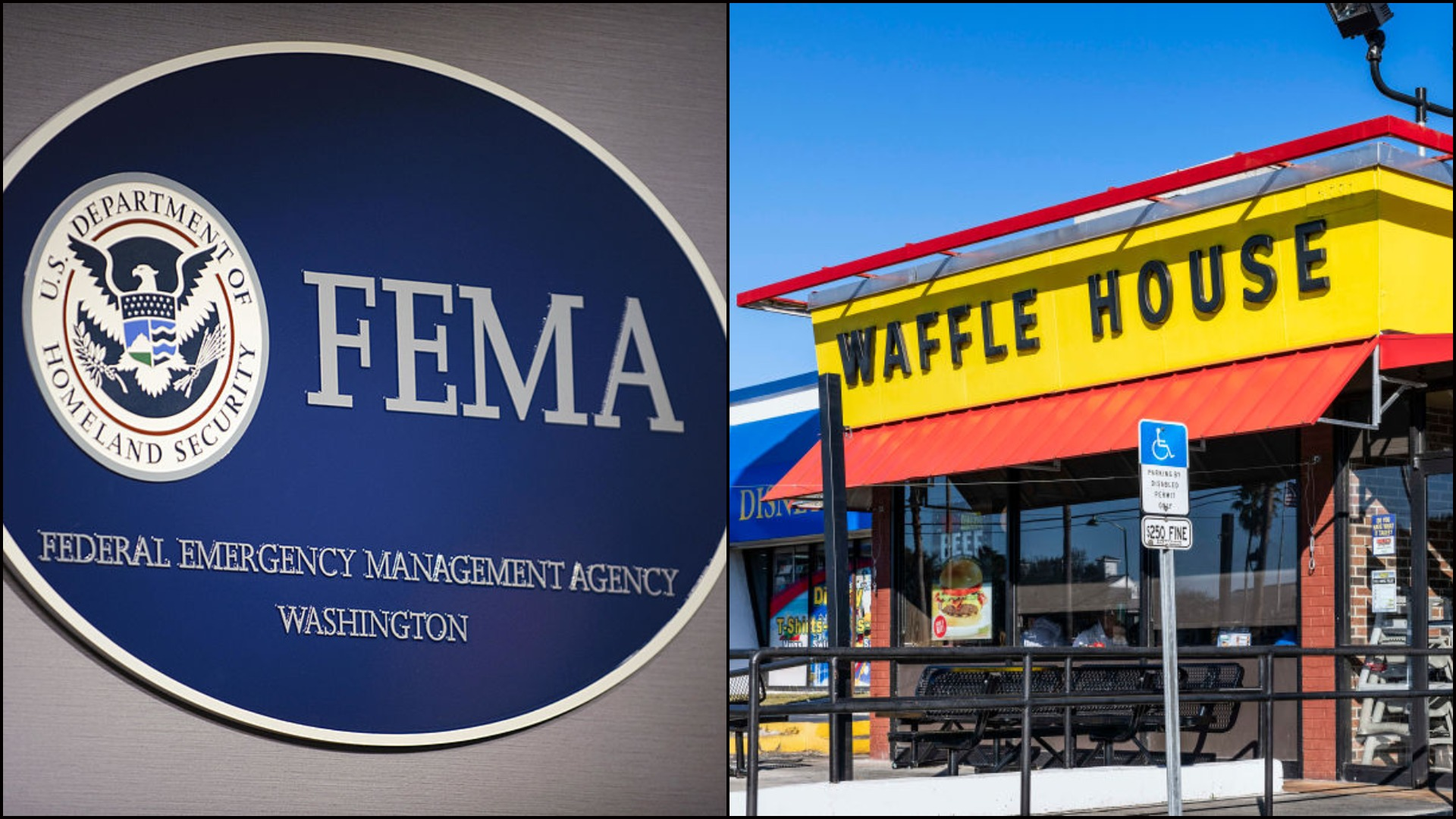The Waffle House Index Is Currently Red—what Does That Mean?
I grew up in New York City, where there is nary a Waffle House to be found. In fact, I'd never even heard of Waffle House until my 20s, and didn't see one with my own eyes till my 30s. Today, I can still count the number of times I've eaten there on one hand, and found it to be... okay. It's evident that, much like the all-night diners of my youth, the beauty of Waffle House is not the food—it's what it represents. It's a place that's always open, always ready to welcome you to rest your tired bones, fill your stomach with cheap food and coffee, and perhaps strike up a conversation with a neighbor or two. It's a place to exist outside the confines of your home, where all are welcome, and everyone belongs. Even though I might not fully appreciate a platter of scattered, smothered, and covered hash browns, I completely understand what they represent.
Waffle House is of such vital importance to the communities it serves, it never closes. It may be a profit-driven decision and not an altruistic one, but still, people depend on it to be there for them, no matter how harsh the outside world becomes. It's open in blizzards, it's open in hurricanes, it's open on Christmas Day. Waffle House has developed what is often regarded as the best emergency management plan in the entire restaurant industry, and it's such an essential part of American life that nine years ago, in the aftermath of the catastrophic Joplin, Missouri, tornado, the Federal Office of Emergency Management Agency created a new, informal metric to judge the severity of emergencies called The Waffle House Index. It was coined by former FEMA administrator Craig Fugate, who told The New York Times that it acts as a snapshot of the situation on the ground in the immediate aftermath of a disaster. "If you get there, and the Waffle House is closed? That's really bad."
There are three levels to The Waffle House Index:
- Green: Waffle House is open for business; operations are normal
- Yellow: Waffle House is open; hours and/or menu are limited
- Red: Waffle House is closed.
In the event of an impending disaster, Waffle House quickly goes into damage control mode. It begins at corporate headquarters, located just outside of Atlanta, where operations analysts comb through data and develop statistical models to predict what sort of impact an impending disaster could have on individual restaurants. They identify which stores are likely to be affected and place calls to all employees to determine their ability to work through the crisis. They stock the stores with extra food and supplies. They enact the necessary protocols to set up the temporary warehouse system so that it can store food and protect the supply chain, and they work with in-state vendors to develop a plan that extends through the expected recovery period. They plan for a pared-down menu, if necessary, and acquire the inventory needed to continue operations for the duration of the emergency. Emergency generators are installed outside of restaurants if power outages are a possibility. Locations outside of but close to the affected area are put on standby to step in if/when they're needed.
A Waffle House Index Red is hardly ever called; during the aforementioned Joplin tornado, it managed to keep all its locations at Index Green. But it does, occasionally, happen: in 2016, in advance of Hurricane Matthew, Waffle House closed 96 stores along the southern coast and assembled an emergency response team that included such roles as construction workers, IT personnel, food safety professionals, and local government liaisons to get all restaurants up and running the moment the storm was no longer a threat.
#WaffleHouseIndexRed: 418 Waffle House restaurants closed. 1,574 open.
Call your local Waffle House today for a carry-out order.
Visit https://t.co/TJdYpTHQPn for specific restaurant details. pic.twitter.com/tOQib3gSoZ— Waffle House (@WaffleHouse) March 25, 2020
Currently, amidst the COVID-19 pandemic, The Waffle House Index has gone to red. While most of its restaurants remain open, the number of fully closed locations has been rising day by day. To keep your eye on the Index, you can check in with Waffle House on Facebook and Twitter, where daily updates are being posted. While everyone understands how important Waffle House is to tens of millions of hungry Americans, everyone also needs to understand how important it is right now to stay home. If you cannot survive without Waffle House, please remember to do everything you can to keep its employees safe and bring some cleaning supplies, because you're going to need them after eating a box of chili-covered hash browns alone in your car.
